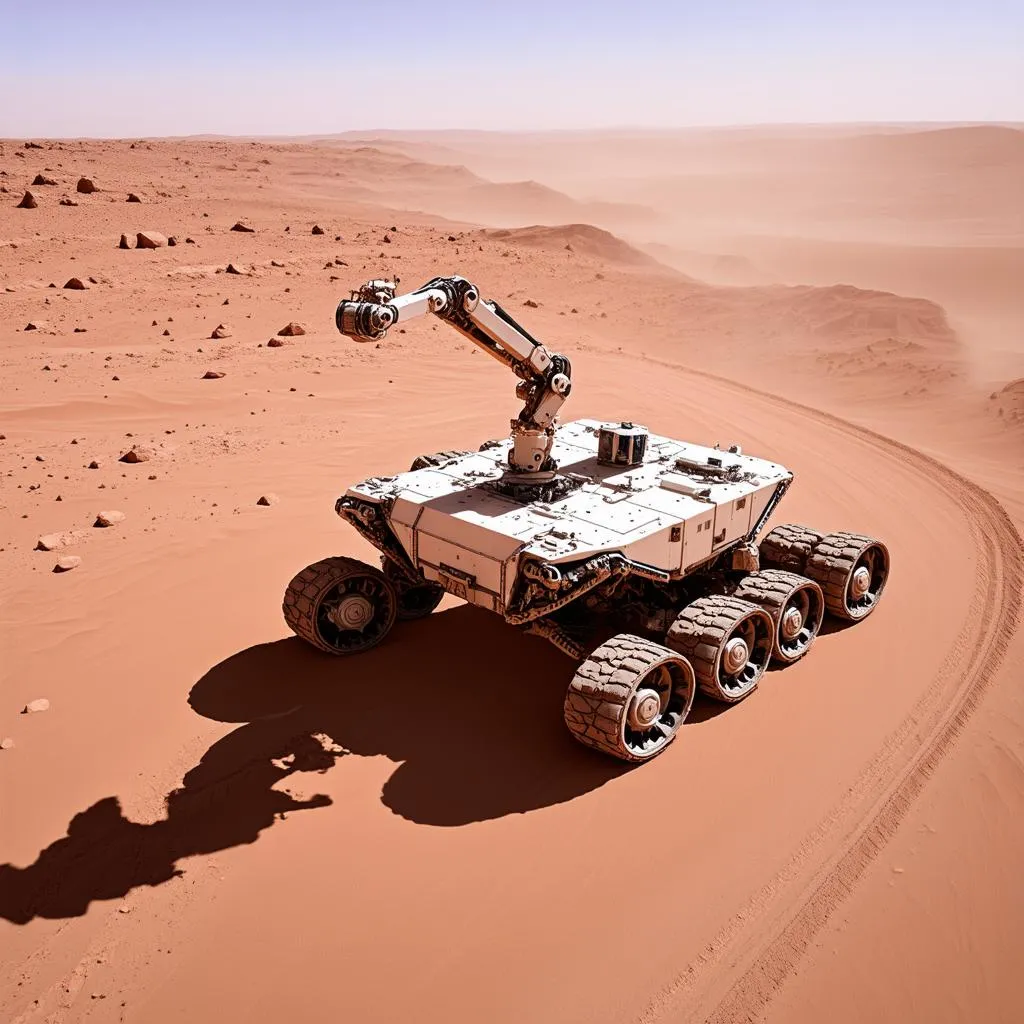Have you ever looked up at the night sky and wondered about the secrets held by those twinkling stars? Some of us dream of space travel, but for now, our robotic emissaries, the Mars rovers, are living that dream. They traverse the rugged Martian landscape, sending back breathtaking images and invaluable data. But how exactly does a Mars rover travel from point A to point B on a planet millions of miles away? Let’s embark on a journey of discovery!
Navigating the Red Planet: A Complex Dance of Technology and Terrain
Unlike Earth, with its well-paved roads and GPS systems, Mars presents a challenging environment for navigation. It’s a world of craters, canyons, and vast plains covered in rocks and dust. So, how does a Mars rover find its way?
Mapping the Route: The Eyes in the Martian Sky
Before a rover even sets its wheels on Martian soil, its journey is meticulously planned by scientists and engineers back on Earth. Using high-resolution images captured by orbiting satellites, they map out safe and scientifically interesting routes.
The Rover’s Toolkit: A Symphony of Sensors and Software
Equipped with an array of sophisticated instruments, the rover relies on a combination of technologies to navigate:
- Cameras: Acting as the rover’s eyes, panoramic and navigation cameras capture 360-degree views, helping it avoid obstacles and identify points of interest.
- Inertial Measurement Unit (IMU): Like an internal compass, the IMU tracks the rover’s position, direction, and movement.
- Wheel Odometry: By monitoring wheel rotations, the rover can estimate the distance traveled.
- Onboard Computer: Powerful software processes data from all these sensors, making real-time decisions to keep the rover on course.
Overcoming Obstacles: A Test of Perseverance
Even with meticulous planning, surprises are inevitable on Mars. That’s where the rover’s autonomous navigation system shines. It can:
- Detect and avoid hazards: Using its cameras and sensors, the rover can identify potential obstacles like rocks, slopes, or ditches and navigate around them.
- Adjust its path: If the planned route proves impassable, the rover can analyze its surroundings and calculate an alternate path.
 Mars rover navigating challenging terrain
Mars rover navigating challenging terrain
The Thrill of Discovery: Unraveling the Mysteries of Mars
Every meter traversed by a Mars rover is a step further into the unknown. By analyzing the rocks, soil, and atmosphere, these robotic explorers are helping us answer fundamental questions about the Red Planet’s past, present, and potential for life.
The Spirit of Exploration: A Journey of Perseverance
The journeys of Mars rovers like Curiosity and Perseverance are testaments to human ingenuity and our unquenchable thirst for knowledge. Their travels, though meticulously planned, are filled with challenges and triumphs, reminding us that the greatest discoveries often lie beyond the familiar.
Planning Your Own Earthly Adventures?
While we may not be exploring Mars just yet, planning a trip here on Earth can be just as exciting! Just like a Mars rover, a little preparation can go a long way in ensuring a smooth and enjoyable journey.
Check out travelcar.edu.vn for tips on planning your next adventure, from finding the perfect destination to navigating unfamiliar roads. And who knows, maybe one day, you’ll be planning your own interplanetary trip!
 Family planning a trip using a globe and travel books.
Family planning a trip using a globe and travel books.
FAQs about Mars Rover Travels
Q: How far can a Mars rover travel in a day?
A: The distance a Mars rover travels in a day varies depending on factors like terrain, power availability, and scientific objectives. However, on average, they cover a few tens to a few hundred meters per day.
Q: How do Mars rovers communicate with Earth?
A: Mars rovers communicate with Earth using radio waves. They transmit data to orbiting satellites, which then relay the information back to us.
Q: What happens if a Mars rover gets stuck?
A: While engineers try to avoid such situations, rovers are designed to overcome minor obstacles. If a rover gets stuck, teams on Earth can analyze the situation and send commands to try and free it.
Conclusion: Embracing the Journey of Discovery
Whether it’s a Mars rover traversing the Red Planet or us exploring our own world, the spirit of adventure and the quest for knowledge unite us all. So, embrace your curiosity, plan your next adventure, and never stop exploring!